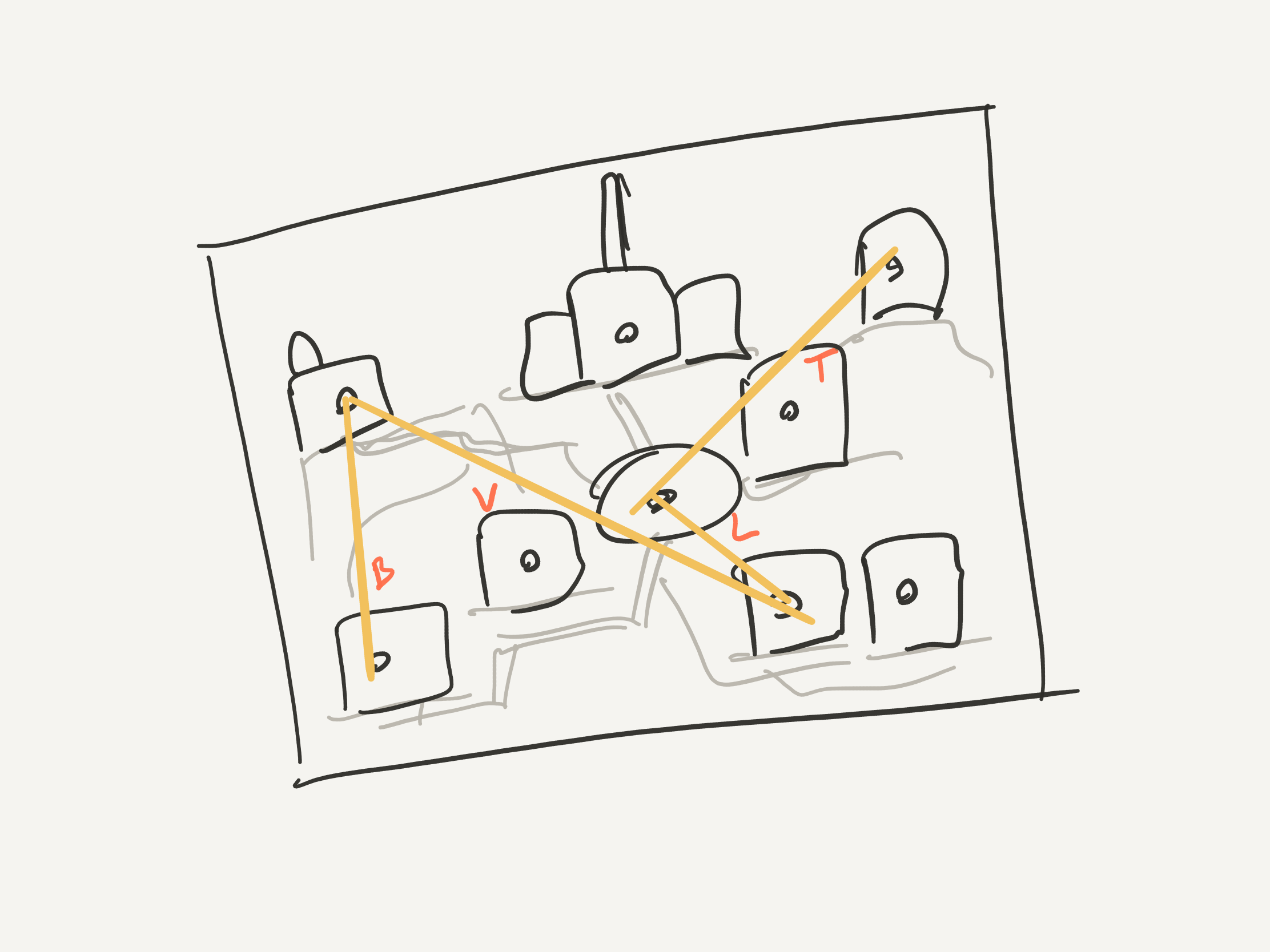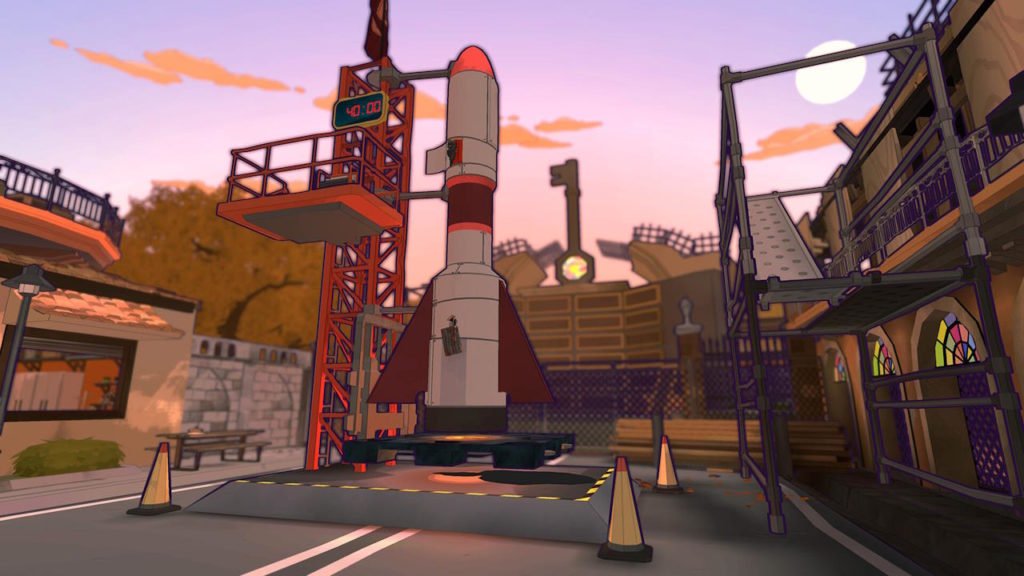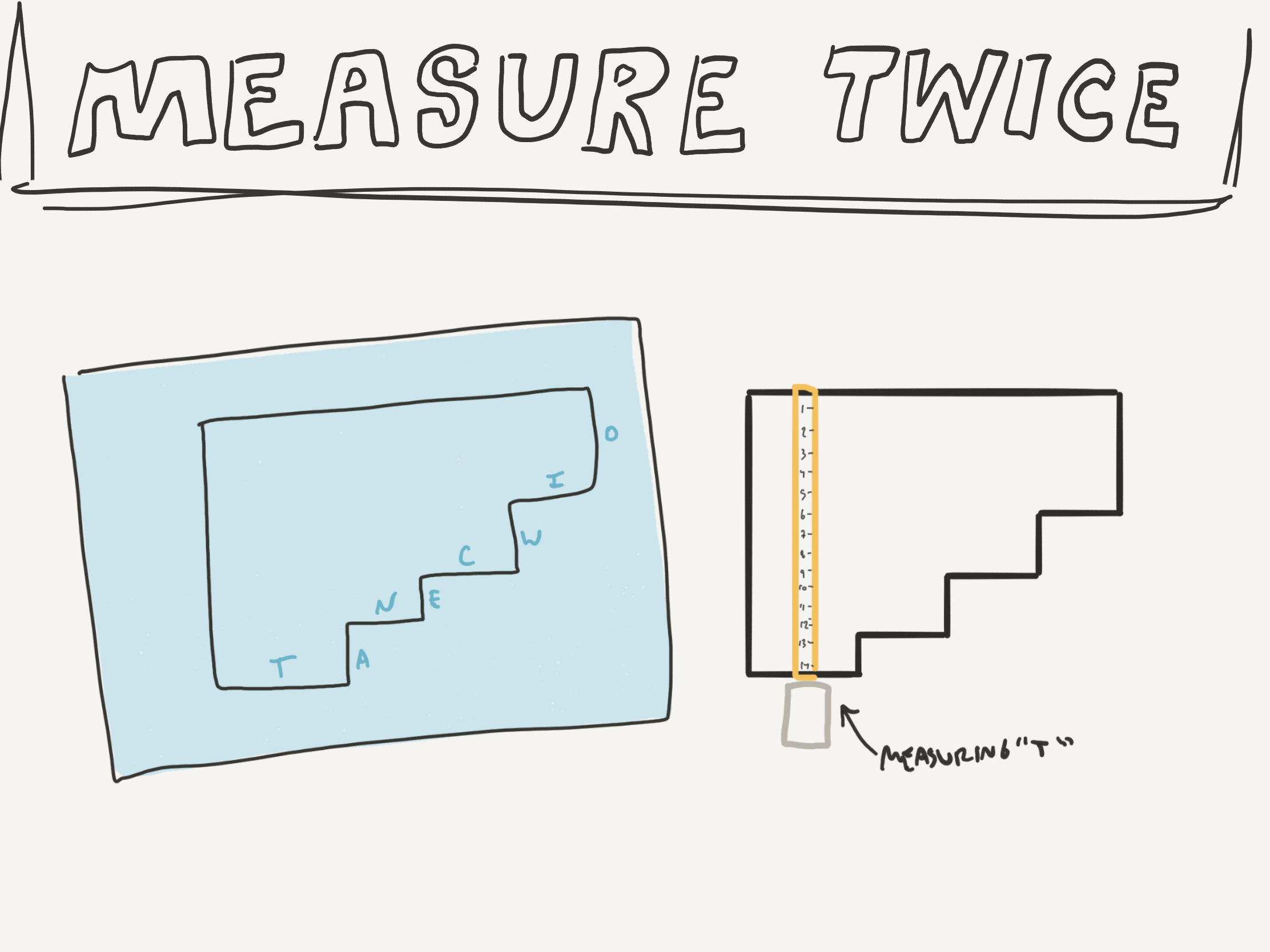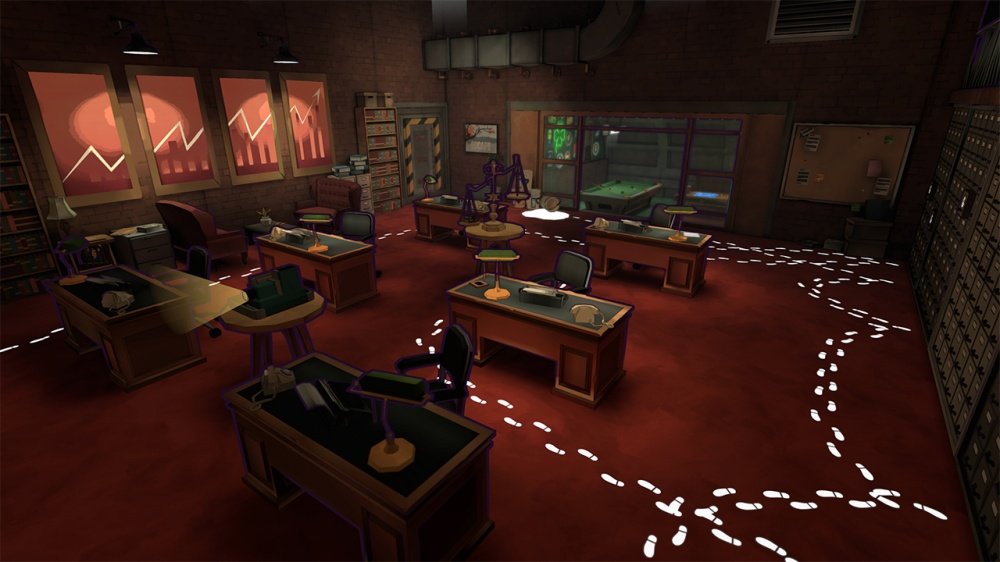Welcome to Escape Academy!
I spent 3 years at Coin Crew Games primarily working on their Puzzle Design team for Escape Academy and its 3 DLCs (Escape From Anti-Escape Island, Escape From the Past, and Tournament of Puzzles). Escape Academy is a first-person escape room adventure game set at a mysterious educational institution, where students must solve perilous puzzles against a ticking clock to prove their skills. As a puzzle designer, I would ideate puzzle and level designs, write up game design documents for all elements of a level, and then often grey box levels and implement puzzles in Unity.
In the full Escape Academy canon there are 26 Escape Room levels…I was the primary designer on 13 of them (and an irl puzzle box). I drew over 2,400 ideation sketches and developed over 150 unique puzzle concepts that were implemented in the levels.
Here’s a closer look at the levels I designed, and some lessons learned along the way.
Note: I will be sharing photos of levels after the incredible art, engineering, and implementation teams have worked their magic. These games were all the result of intense and supportive collaboration with a very talented team. They transformed my harebrained ideas and chaotic sketches into reality.
WARNING! Narrative and puzzle spoilers for all Escape Academy content below! You should go play it, it’s a lot of fun! You can play it on XBox, Switch, Playstation, and PC! Go do it!
Escape Artist
For the art classroom’s design, I was inspired by the architecture of the Spanish Village at Balboa Park in San Diego (my hometown), and I was really pleased to see that the art team was able to put the rainbow painted pavers into the level.
The door face’s design was based off of a temp asset I made for the grey boxed version of the puzzle. I was not expecting to see the face make it into the final game, but it’s fun for me to see it included like that.
This level also has the only assets in the game I 3D modeled, the pedestal vases on display on both sides of the face door.
My Favorite Puzzle - The Shredder Painting
I wanted the puzzles in this level to take inspiration from different art styles, and different types of visual trickery. A common motif throughout the level is to encourage the player to “try looking at things from a different perspective”. Those two ideas collided with the shredder painting. This puzzle was inspired by the infamous stunt Banksy pulled at an art auction, where he constructed a special picture frame to shred the painting inside of it immediately after it was sold.
Here the player must place a painting in a frame and shred it so they can re-order the shredded strips to reveal a hidden sequence, as implemented by the amazing Engineering team.
Lab Rat
The Computer Lab level is all about technology and stealth. Interacting with computers and screens was a really fun and unique element to play around with while designing this level, but I didn’t want the player to get so immersed in the screen-based puzzles that they lost track of the physical environment the level took place in. The balance between screen and space was a major design consideration for this level. My solution was to come up with very novel puzzle interactions offscreen that could be uniquely paired with the onscreen activities.
In escape room design, novelty is everything. You always want the player to feel like they’re doing something new…never seen before, and never seen again. Some novel elements of this level included: a puzzle involving outsmarting an animal (Turmeric the rat), a puzzle that required the player to input the solution using their “feet” instead of their “hands”, and the fan-favorite Snackdoku machine (a simplified sudoku puzzle in the form of a vending machine).
My Favorite Puzzle - Disco Fever
In the Computer Lab you are tasked with hacking the sentient AI Professor. At one point you infect the Professor with a computer virus….but not just any virus….it’s DISCO FEVER, and the entire level transforms into a flashy funky disco!
Now the players must follow the symbols on the screen and step on the right tiles on the dance floor in order to proceed. I was really stoked to put this puzzle in the game, it’s a fun moment that breaks up the tension of the room, a unique interaction that players enjoy, and an excuse to have our composer Doseone make a custom groovin’ track to play during the sequence.
The Rival Room
The Rival Rool is definitely one of my personal favorites. It started by asking the question, “If Escape Academy is a school, what are their sports like?” That question rapidly grew into this gigantic lava-laden steel jungle obstacle course that mashes up the aesthetics of athletics with the spectacle of American Ninja Warrior, and tests the player’s mental fortitude in new and novel ways.
The development of this level also had some really interesting ramifications as we continued developing Escape Academy expansions. Without the Rival Room level and the concept of competitive puzzle solving in our Escape Academy lore, we likely never would have made the Rival Room level in the Escape From the Past DLC, or the entirety of the Tournament of Puzzles DLC.
My Favorite Puzzle - The Lock Cabinet
The whole Arena level is an exercise in maximalism, and nowhere is that clearer than in the final challenge: the Lock Cabinet. The initial concept was that the Arena’s obstacle course would be broken up into 5 platforms, each with a distinct challenge, and each challenge would represent one of the classic features of Escape Rooms.
So challenge by challenge the player is being tested on their spatial reasoning, logical deduction, ciphers, math, opening locks, etc. I wanted the final platform to be a gauntlet of locks the player would unlock in rapid succession, acting as a nod to the classic puzzle boxes that Escape Rooms have their roots in.
I won’t go into too much detail on the specific locks here (I don’t want to spoil the fun), but they were a blast to design and cram as many novel interactions into as possible. I love this puzzle because when the players first approach it they tend to be intimidated by the sheer quantity of lock interfaces in front of them, but they quickly get to solving and showing off their puzzle talents.
What Lies Below…
Starting the process of designing this level intimidated the heck out of me. As the finale level for Escape Academy, it was really important to me that it stuck the landing, while also covering a lot of narrative ground. I started working on the level with two requirements: a kidnapped Headmaster who was incapacitated, and a villainous AI hellbent on perfect educational automation that the player had to beat. After lots of brainstorming and discussions with the narrative and design teams, a structural premise for the level began to emerge. The player would have to complete the AI’s puzzle challenges in a school environment that looked like a warped funhouse mirror version of Escape Academy (complete with standardized testing scantron sheets), and along the way pick up the tools necessary to tear down the AI from the inside out. The kidnapped Headmaster also left additional clues for the player along the way to make the player’s rescue mission feel a little more collaborative.
While the other levels I had designed up to this point in Escape Academy were grounded in some kind of reality (art class, coding, arena sports), this level was full sci-fi fantasy, so it took a lot of trial and error to figure out the right tone for the puzzles and level design. I did a lot of greyboxing in Unity to figure out the right floorplan for this environment. I wanted the player to always be able to see the villainous AI looming above them, so I decided on a hexagonal floorplan where the player would move around a central core. First they’d solve the puzzles on the outside of the core, and then use the tools they picked up along the way to battle the AI from the inside of the core.
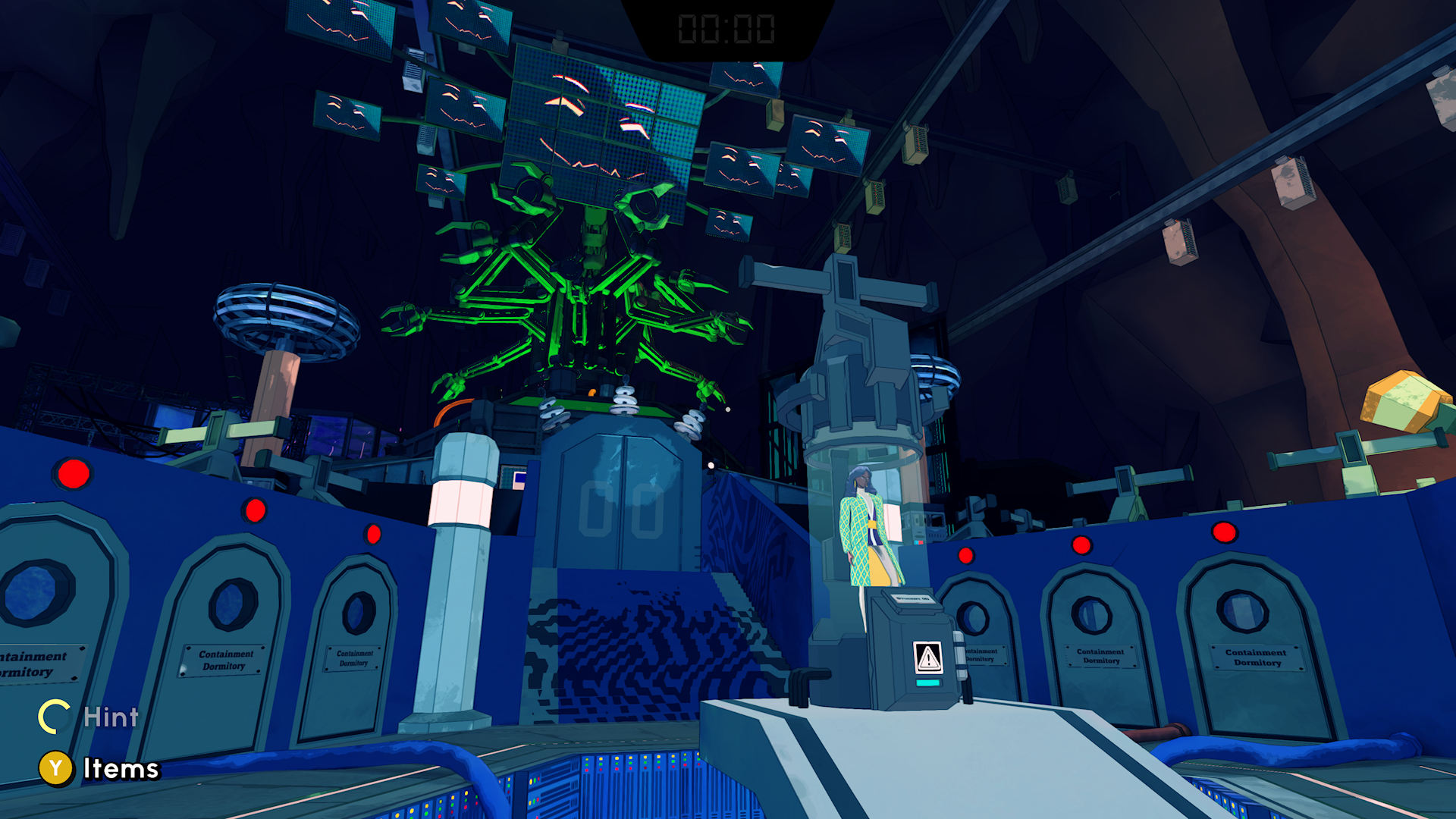
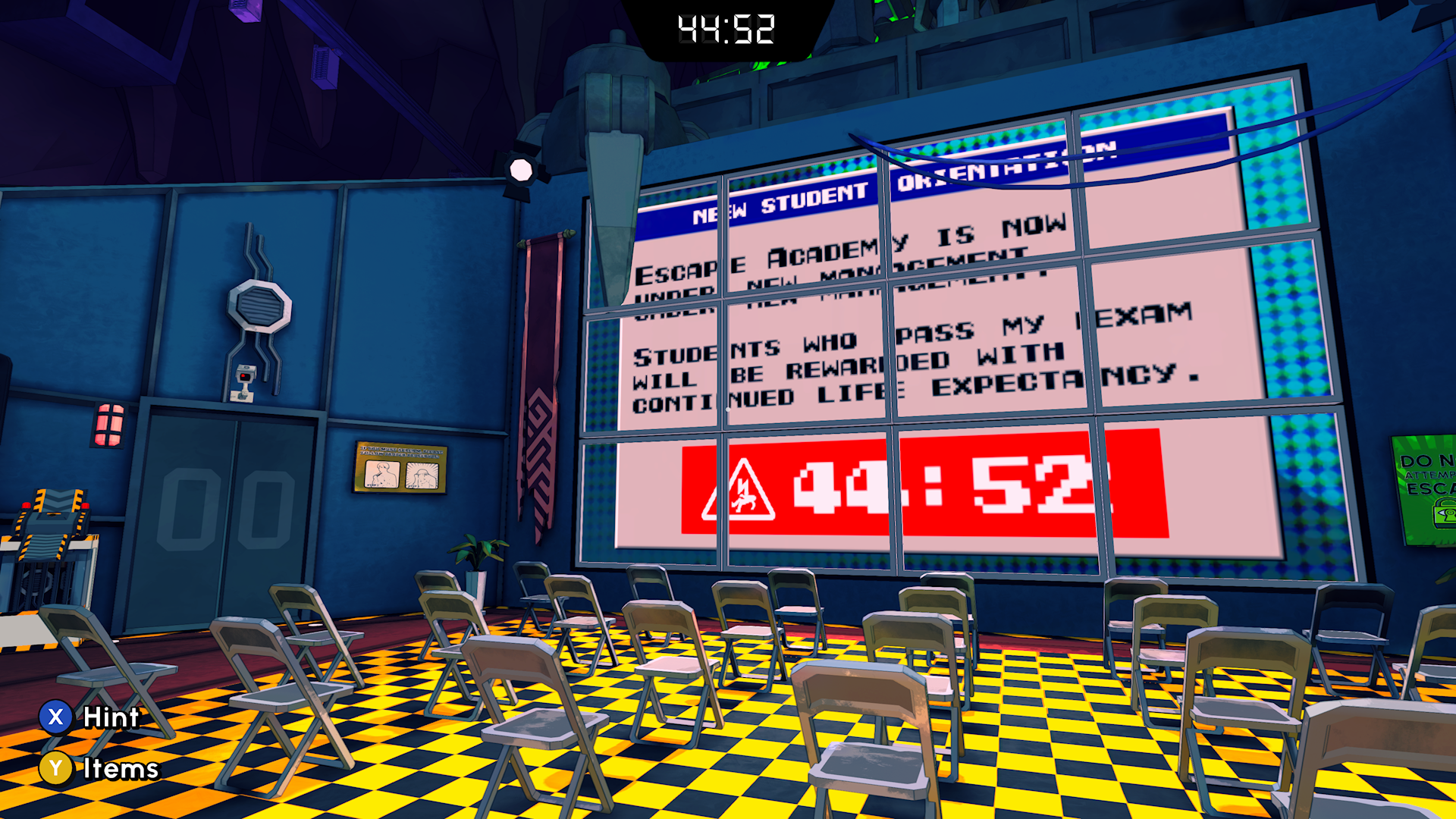
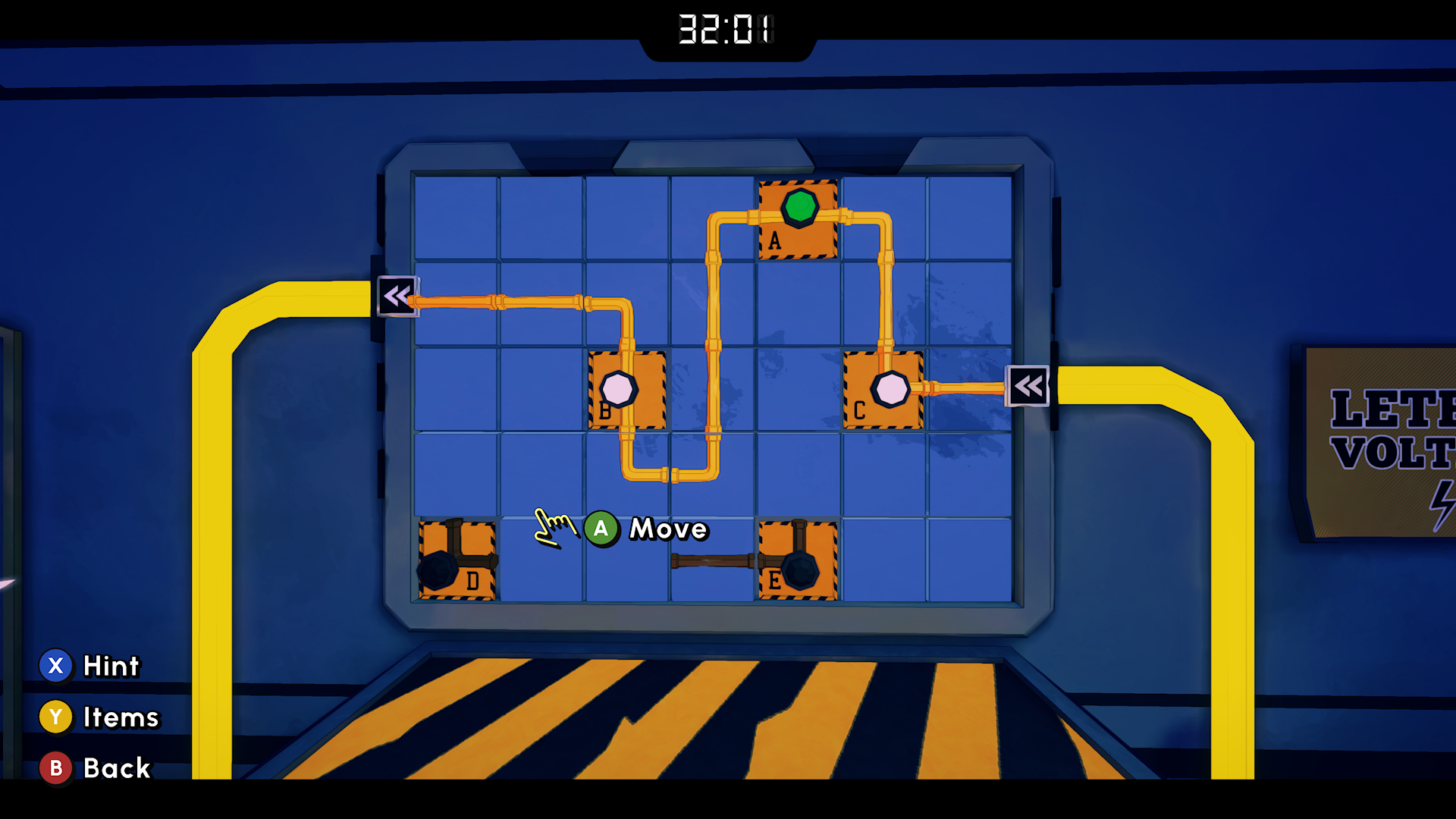
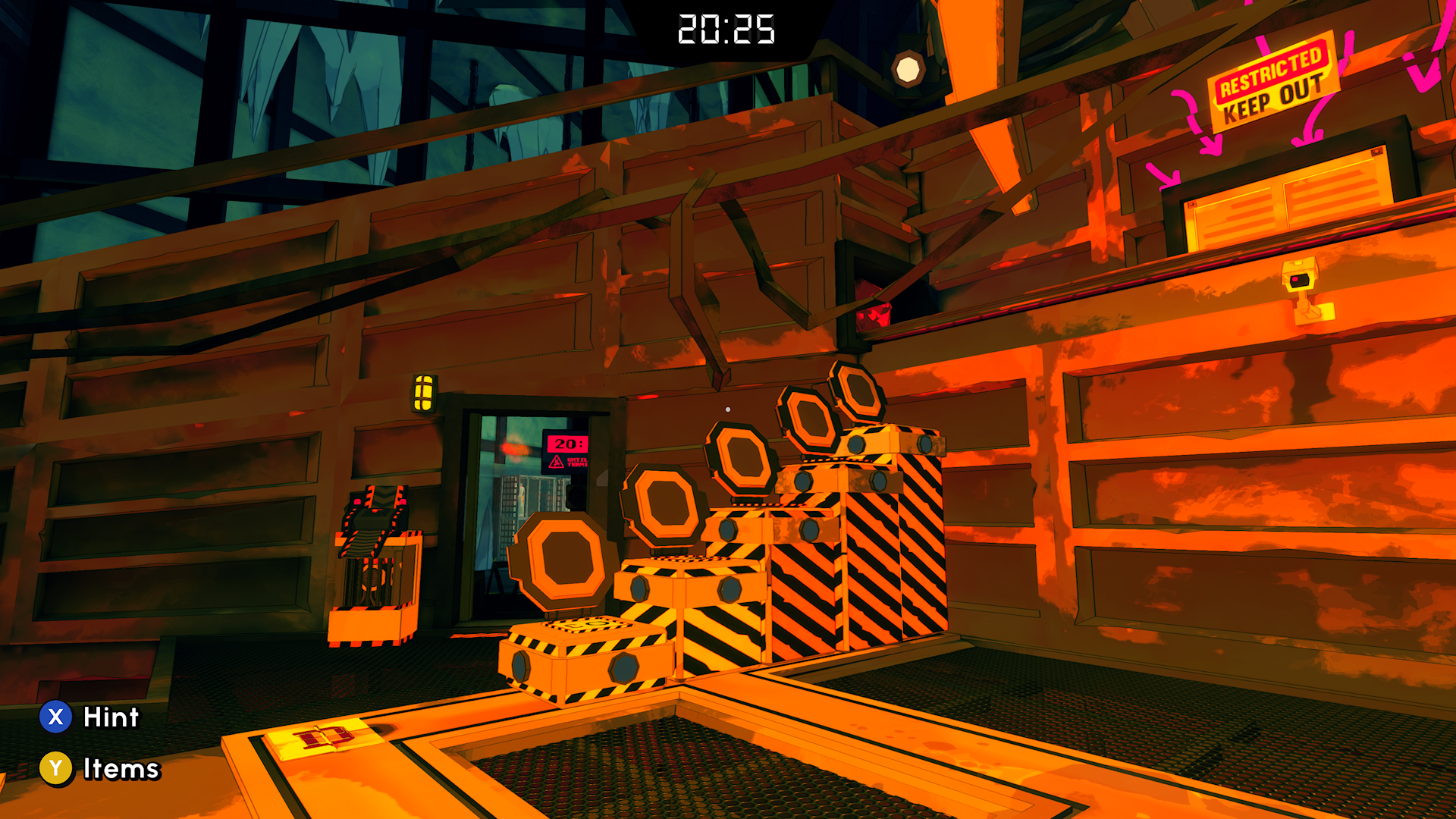
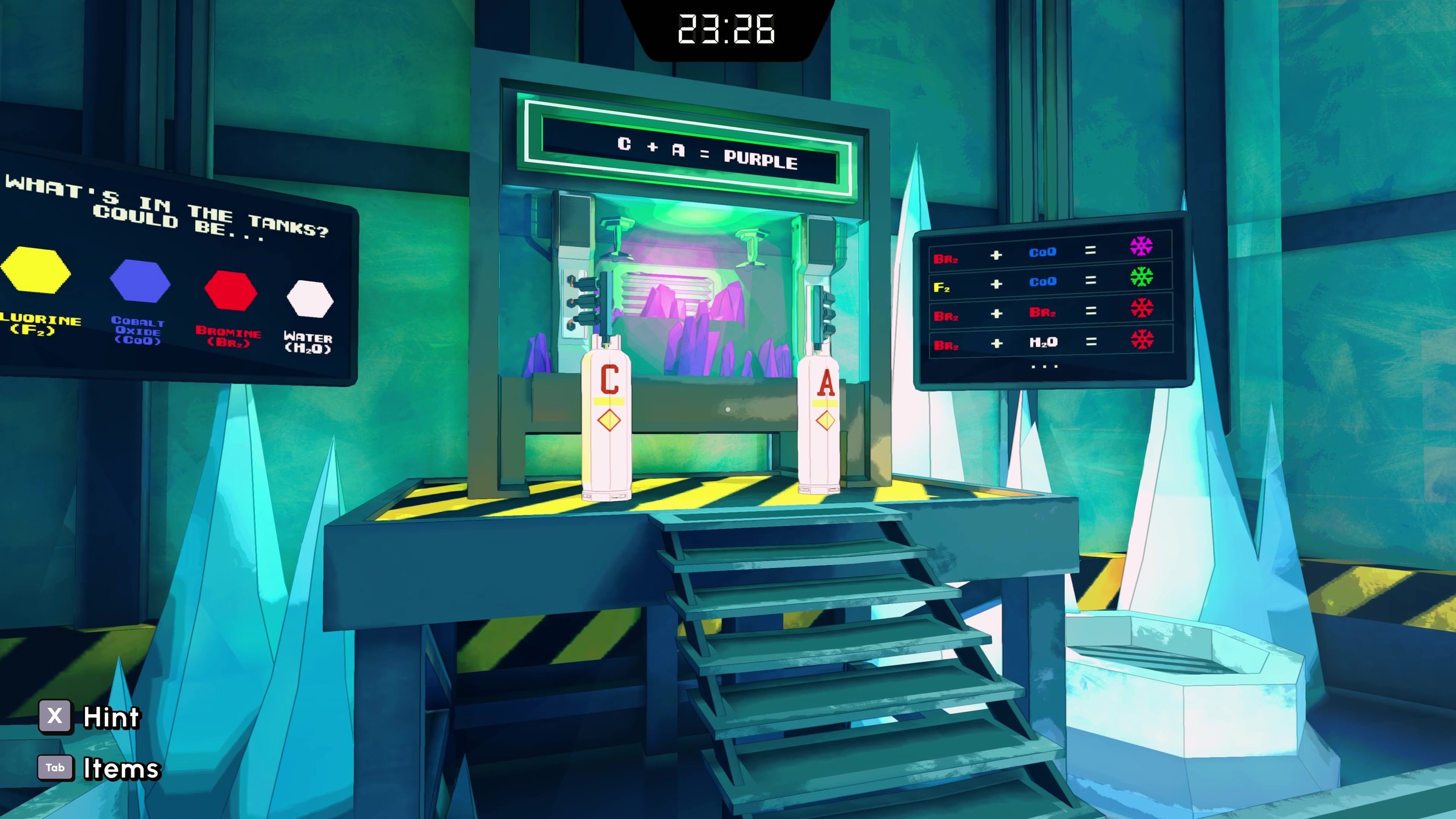
Escape From Anti-Escape Island DLC
The first Escape Academy DLC starts with you being sent on a well-deserved summer vacation to Locksmith’s Cove after saving the day during your first year at the Academy. But the summer vacation plans are thrown out the window when the Academy’s Escape Jet crashes in the middle of the ocean, leaving you and your classmates stranded on a mysterious island run by the Academy’s sworn enemies…the Anti-Escape Scientists. These scheming scientists have been cooking up their trickiest traps yet, and now you’re going to need all your best escapist skills to get out unscathed.
This level pack was a step up for narrative/level design synergy, with each of the levels needing to accomplish several specific narrative beats, while still feeling like a cohesive escape room experience. This posed some fun challenges, with inventive solutions.
After launching the base Escape Academy game and receiving player feedback that they wanted the levels to get more difficult, this DLC pack was also a step up for the intended difficulty of the levels. We used a couple of tricks to raise the difficulty, including trying to fit more puzzles within shorter level time limits and modifying puzzles to make their solutions more obfuscated than usual. Of course, then we got player feedback that the levels were too difficult.
Take to the Skies
How do you set an escape room in an airplane!? All the previous escape room environments were densely detailed with unique layouts and lots of novel nooks and crannies to hide puzzles in…but a plane is sterile, repetitive, and highly linear. Additionally, this level required some very specific narrative beats, before puzzles were even a consideration:
Jeb is flying the plane and gets knocked out when the plane is attacked at the start of the level
Mid-level twist: Gillian and the Headmaster escape the plane halfway through the level, so they’re separated from you and Jeb
You and Jeb escape the plane together at the end of the level before it crashes into the ocean, and parachute down to a (seemingly) deserted island
After considering some options, I decided to base the main action of the level around escaping the plane via ejector seats. There would be five special ejector seats on board, and the seats would have to be primed for takeoff before you could safely get off of the plane. The mid-level twist would be justified by Jeb’s and your ejector seats being out of fuel. I preferred ejector seats over something like skydiving with parachutes because they integrated better with our existing puzzle systems, and they gave the plane a bit of special Escape Academy flair. We didn’t have the game technology for our player characters to jump, but we did have the game technology simulate our player characters sitting in a chair. And then the chair could be ejected from the plane.
As for the puzzle design, I did a deep dive into airplane iconography, asking myself “what would a player expect to see on an airplane level?” I wrote up a list of all the most iconic elements of air travel and then tried to develop puzzles inspired from those visual elements. Things like a cargo hold, luxury suitcase brands, sliding window shudders, an inflight product catalog, cockpit flight data dials, overhead luggage compartments…etc. Then I assembled the level by placing the puzzles where they best fit between the narrative beats.
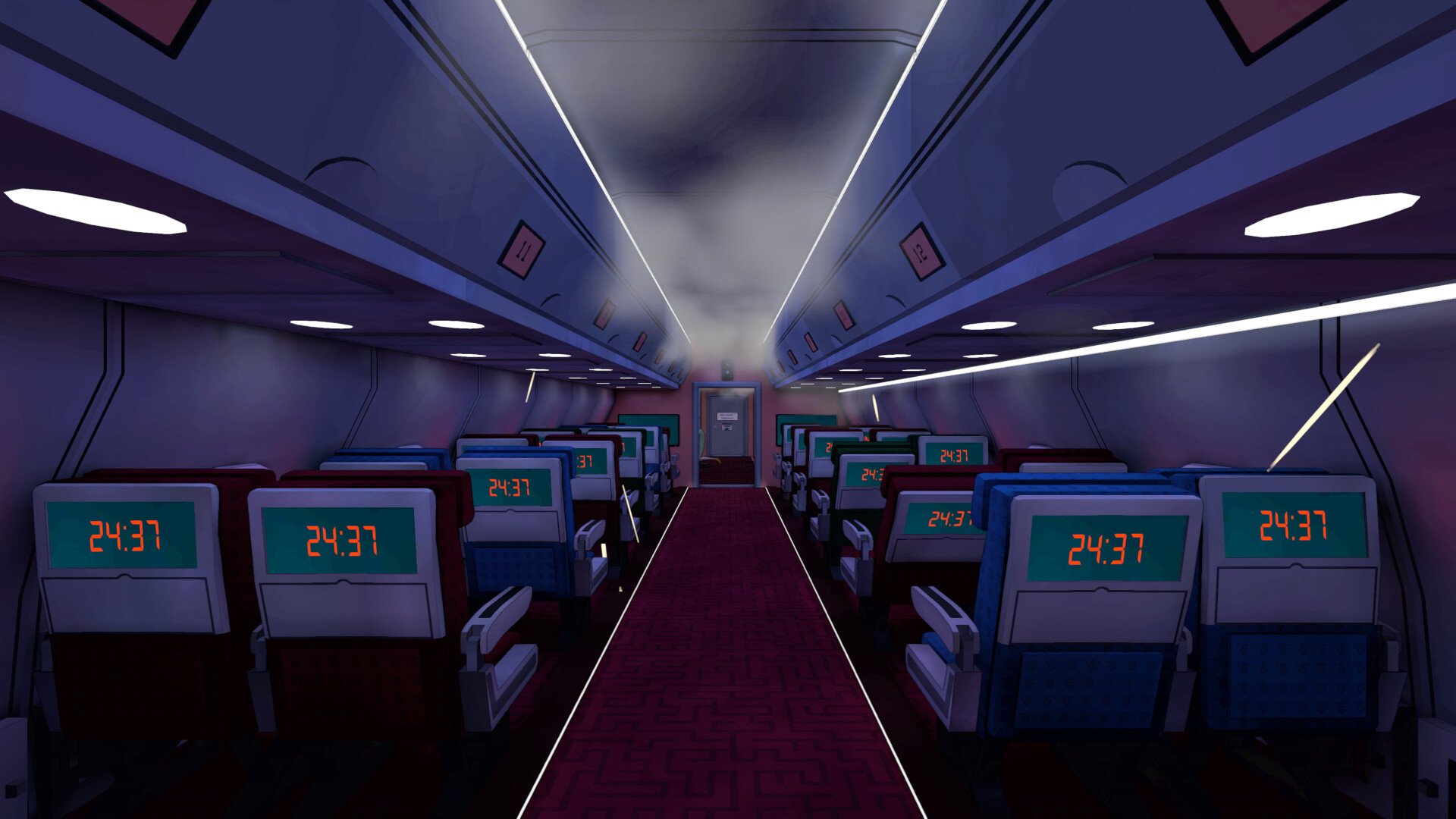
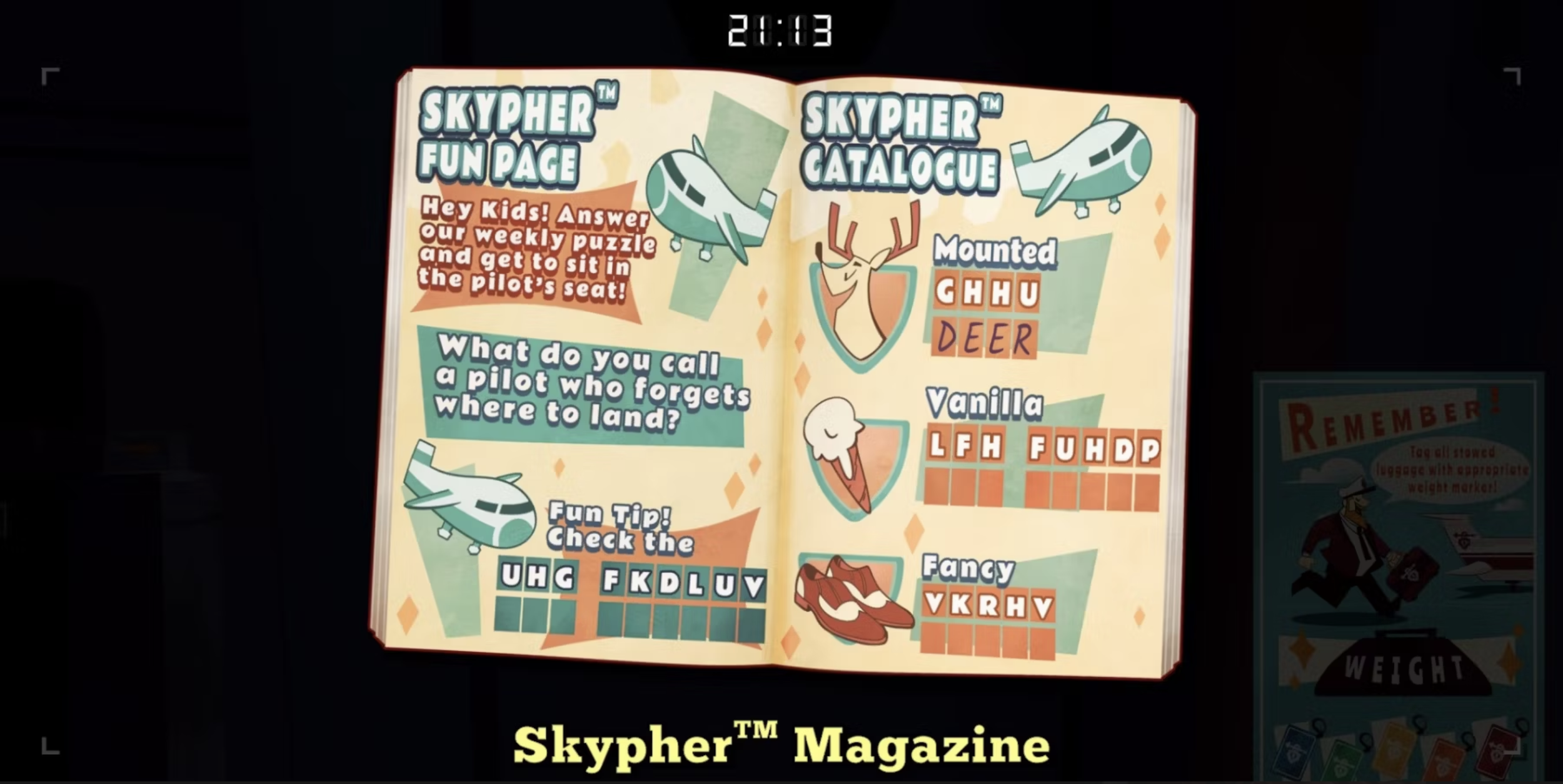
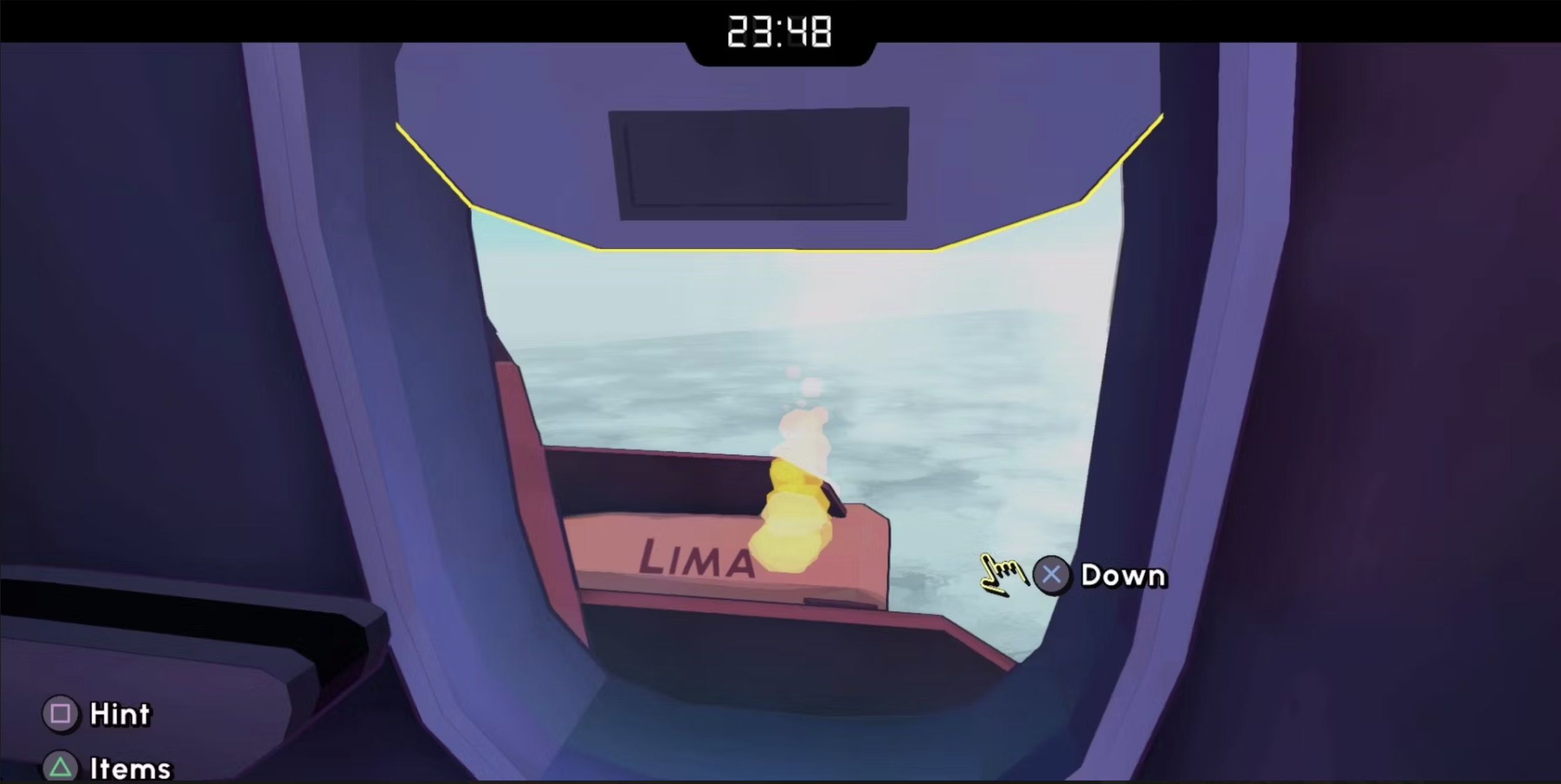
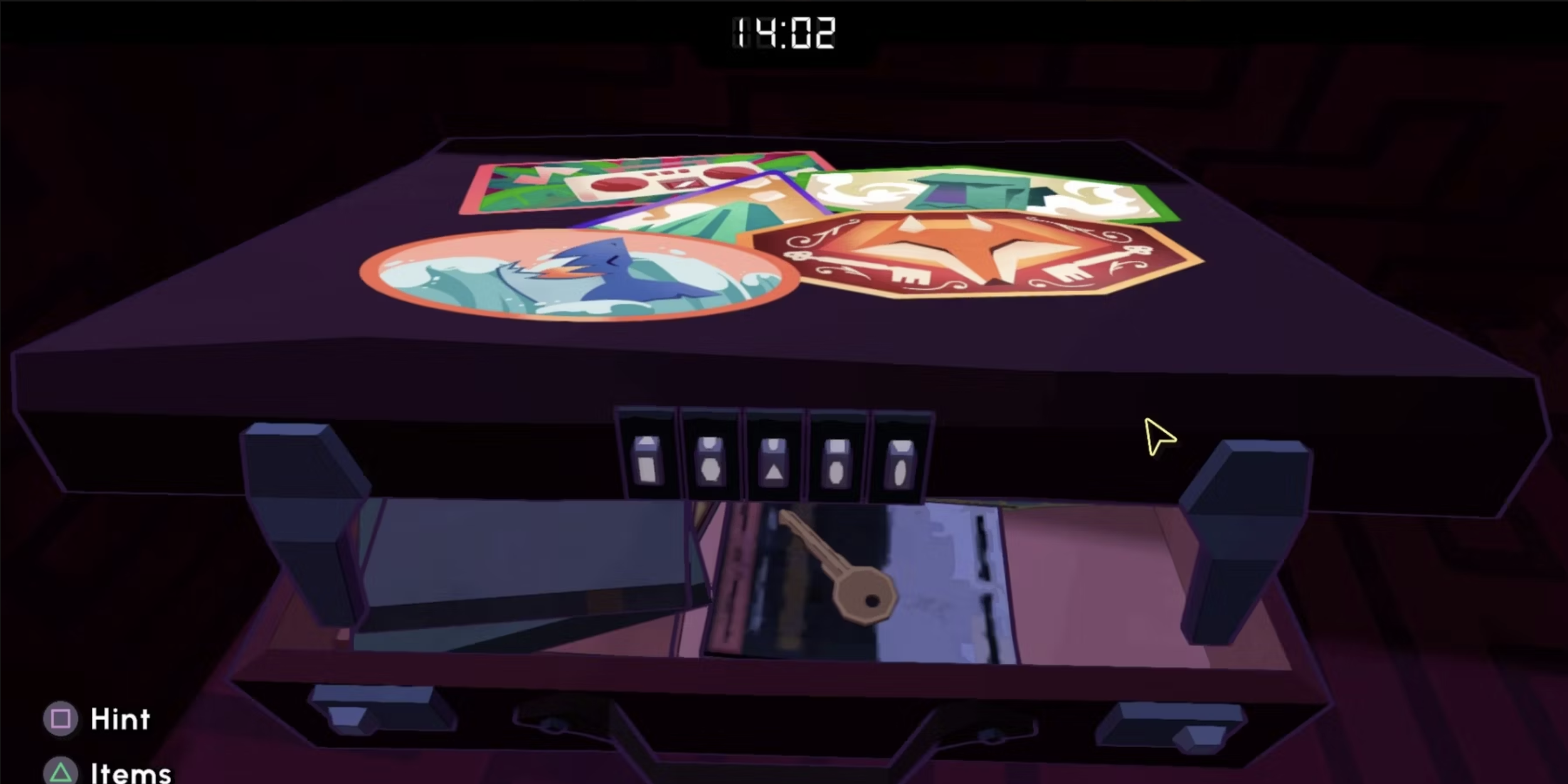
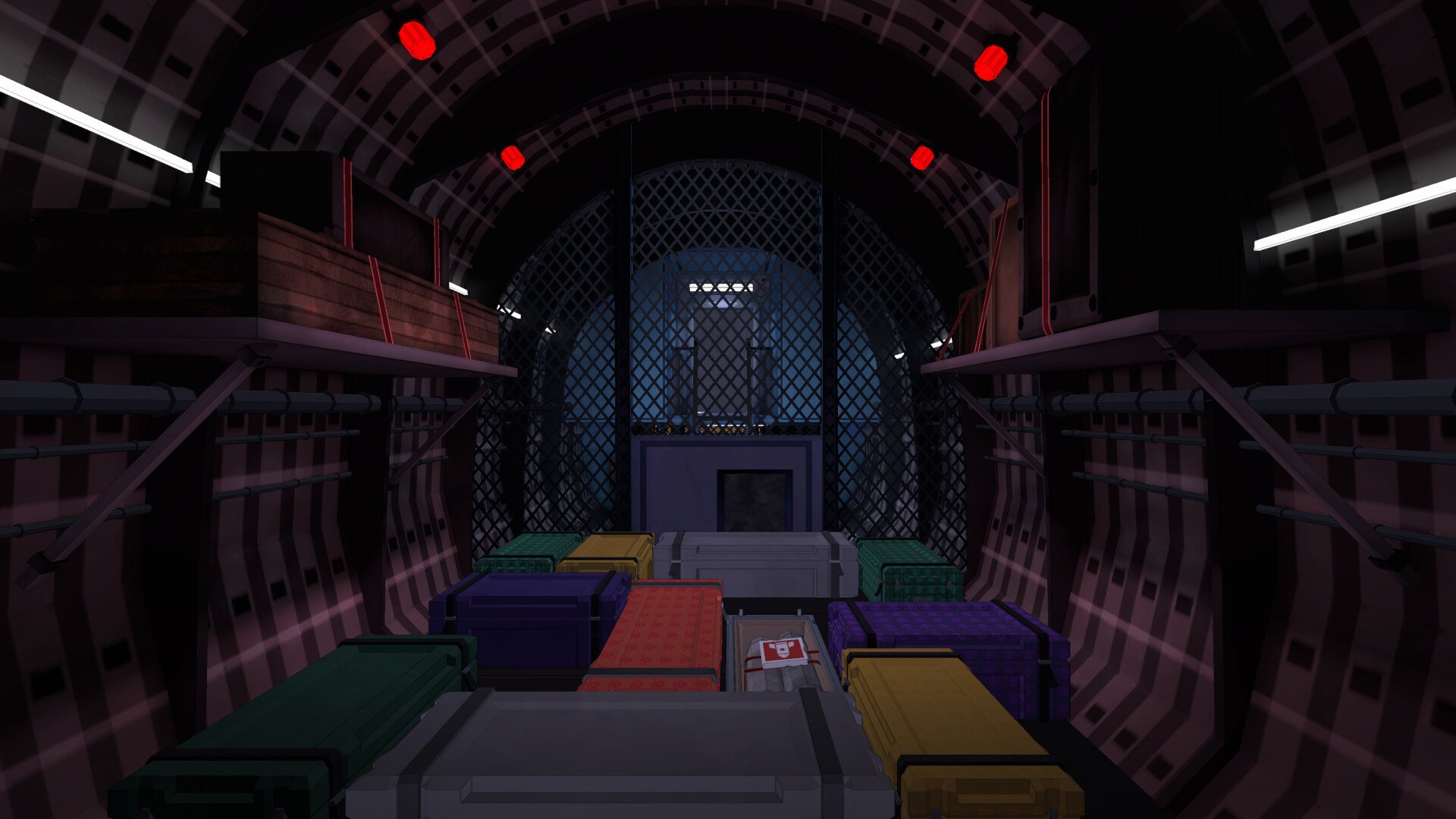
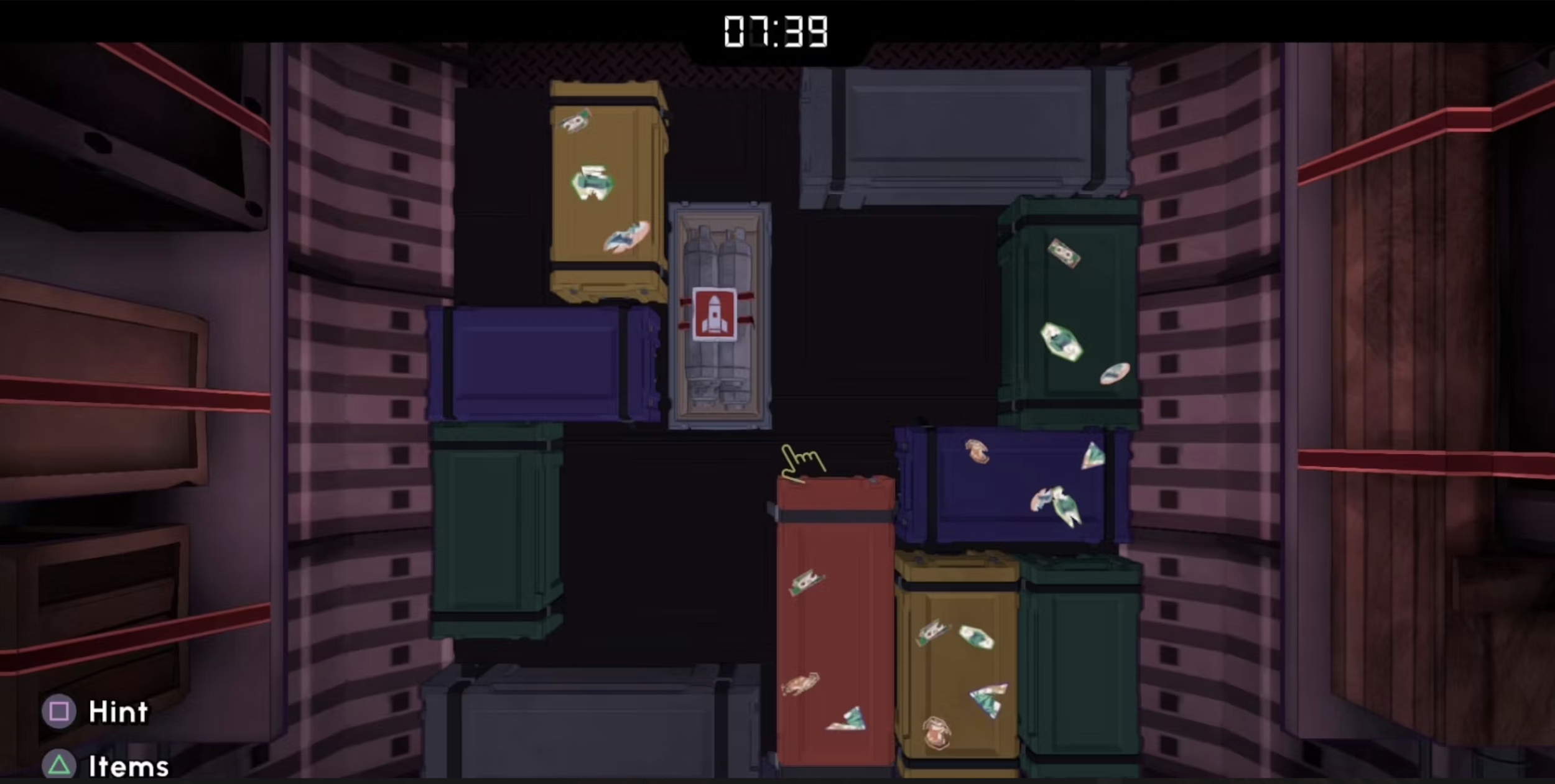
The Experiment
The design thesis for this level was “boss battle”. I wanted the player to feel like they were having a classic video game boss battle against Liz, the pack’s main antagonist. Mike, my boss, suggested using the Mario boss battle structure as inspiration — most bosses in Mario games have a “three strikes and they’re out” kind of pattern to ‘em. So the level premise was born: Liz would be in some kind of mecha-boss apparatus at the center of her evil volcanic lair. You’d have to commandeer three of her turrets and fire them at her to deactivate her machinery.
I was able to apply a lot of the lessons I learned designing What Lies Below to this level, but I still wanted it to feel distinct. In What Lies Below, I placed the villain at the center of the floorplan and looming above the player, so the player always felt like they were being watched. In The Experiment, I placed the villain at the center of the floorplan below where the player started the level, in an amphitheater-style layout, so the player would feel like they were descending to engage in battle with the villain, and then ascending to retreat and plan their next move. Like climbing in and out of the lion’s den. In both cases, I wanted the villain always within the player’s line of sight so they always could see what their goal for the level was, but by changing the player’s spatial relationship to the villain I was able to manipulate their emotional attitude towards each level’s villain.
The biggest design challenge with this level was figuring out what kind of puzzles to put in it. In my previous levels, I always had some real-world references for visual iconography that would fit the theme of the level. Art supplies for Escape Artist, computers and coding for Lab Rat, airplanes for Take to the Skies…I had a good sense of what players would expect to see and do in those kinds of levels. But a volcanic sci-fi evil villain lair? As a result, my design strategy was to think more about the aesthetics of the puzzles than their functionality. I looked at a lot of retro computer equipment — the kind of stuff you might see as set dressing in a (campy) James Bond villain’s secret hideout — and tried to design puzzles that looked like they’d fit in there. The consequence of this design choice is that the puzzles felt fairly disconnected from their environment, especially when compared to the more grounded reality of levels from the base game. They may have looked like they belonged in the environment, but the player couldn’t anticipate the cause-and-effect relationship between each puzzle and its environment. Nine times out of ten the player can instinctively assume that unlocking a lock will open a door…but show them a bunch of gizmos and doodads and they’re not going to know where to start or how each component connects.
I hope this doesn’t read as defensive or demeaning. I’m super proud of this level, I think it’s very experimental and pushes the limits of what kinds of stories can be told using an escape room. I learned a lot working on this level and was fortunate to be able to apply those lessons to future levels. And I think it’s fascinating how sci-fi is a deceptively tricky theme to design for, because in sci-fi even the most mundane things are indecipherable.
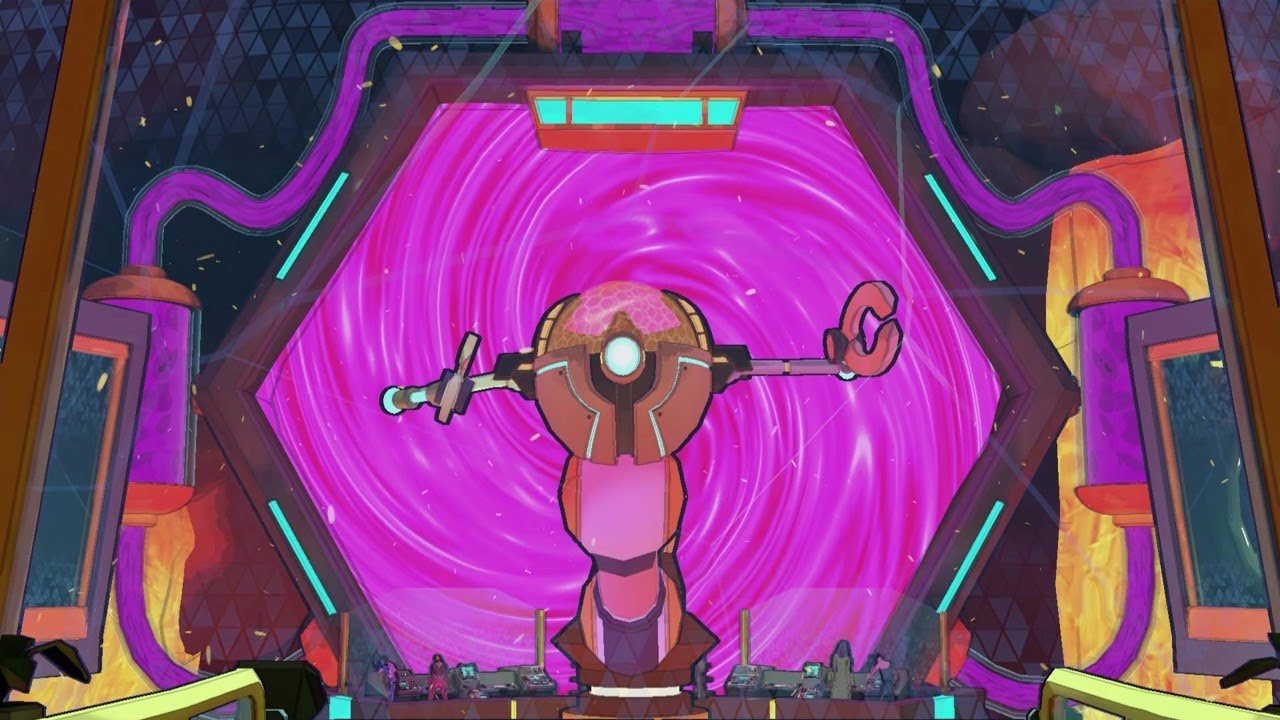
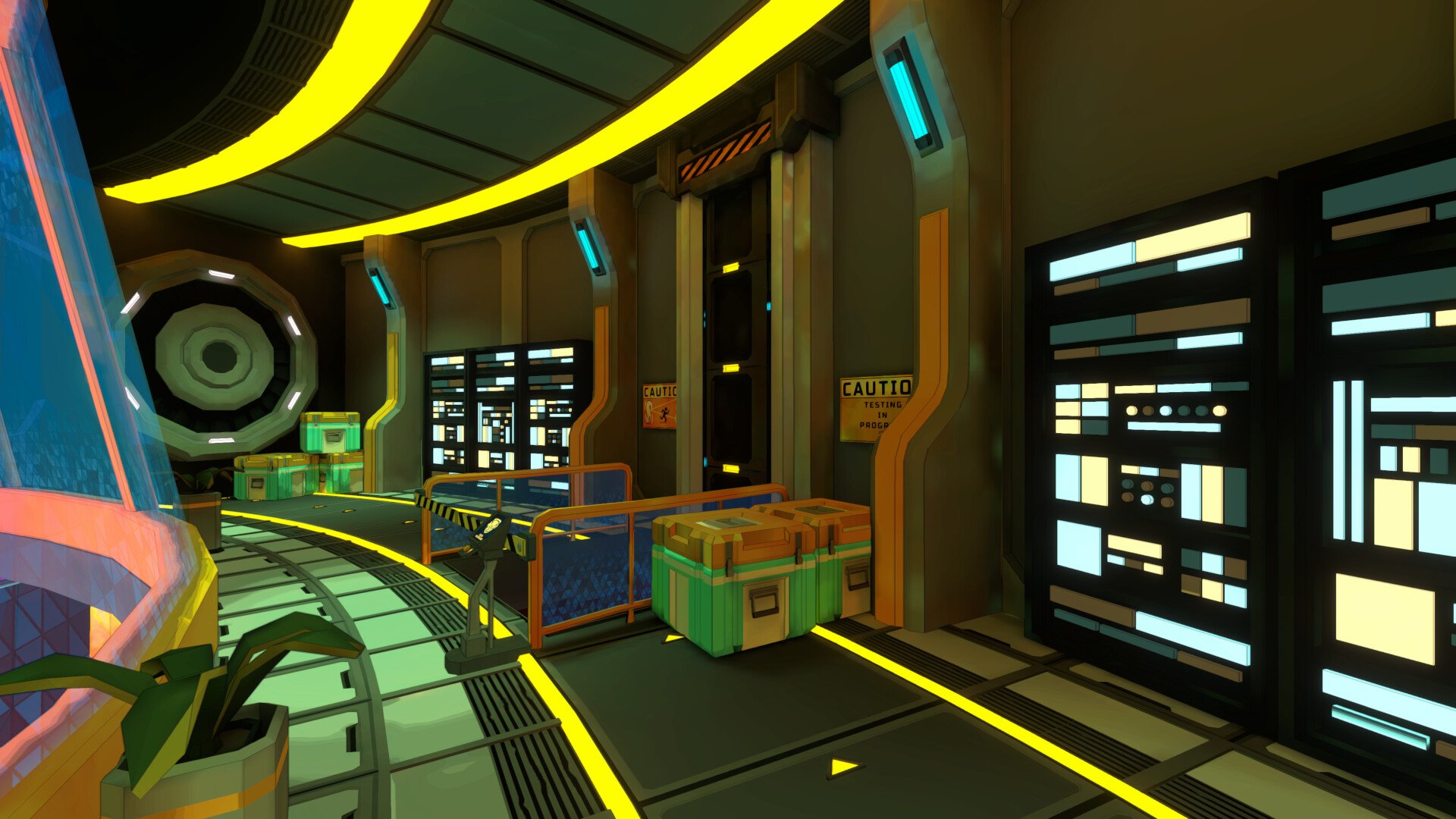

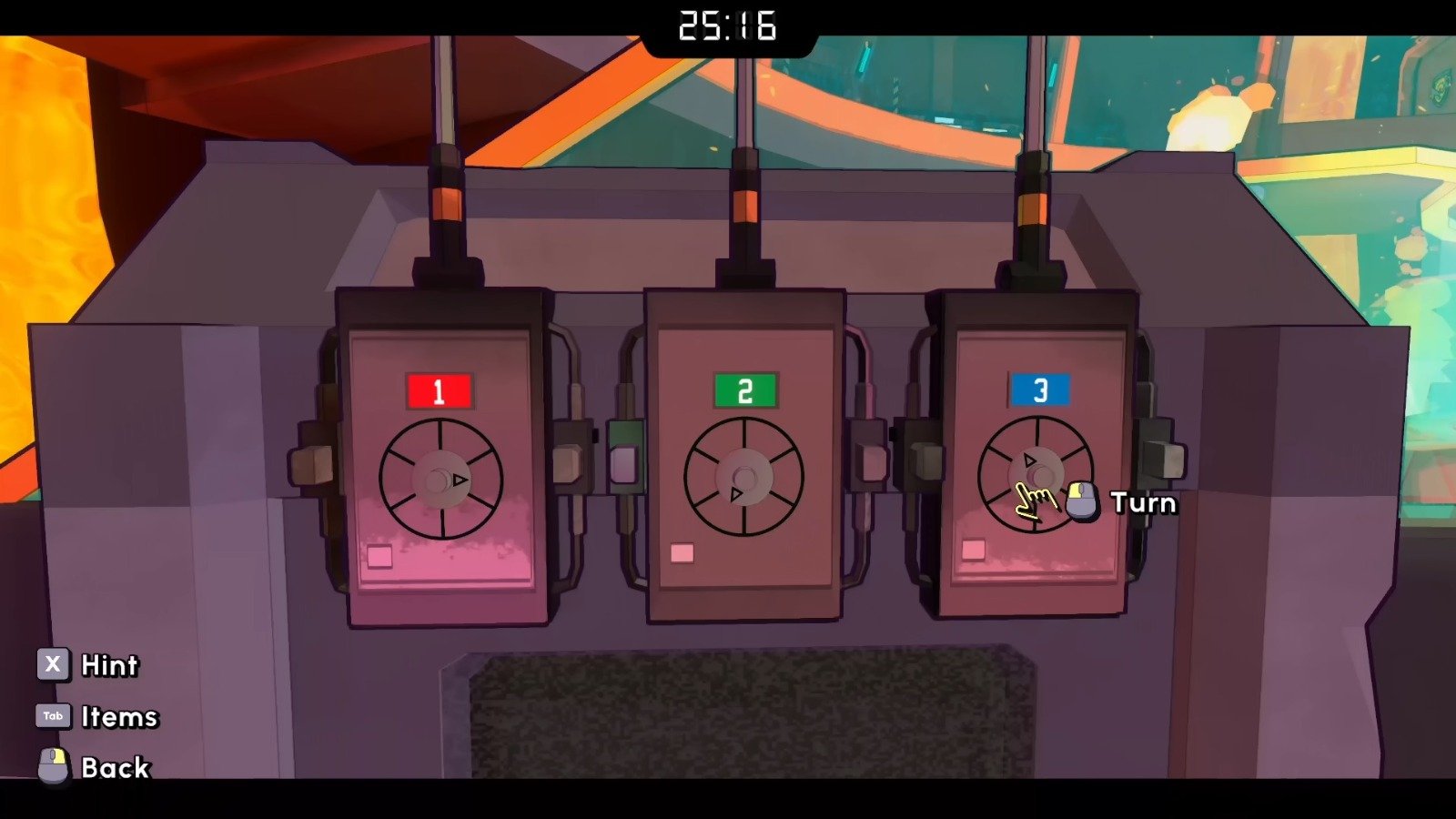
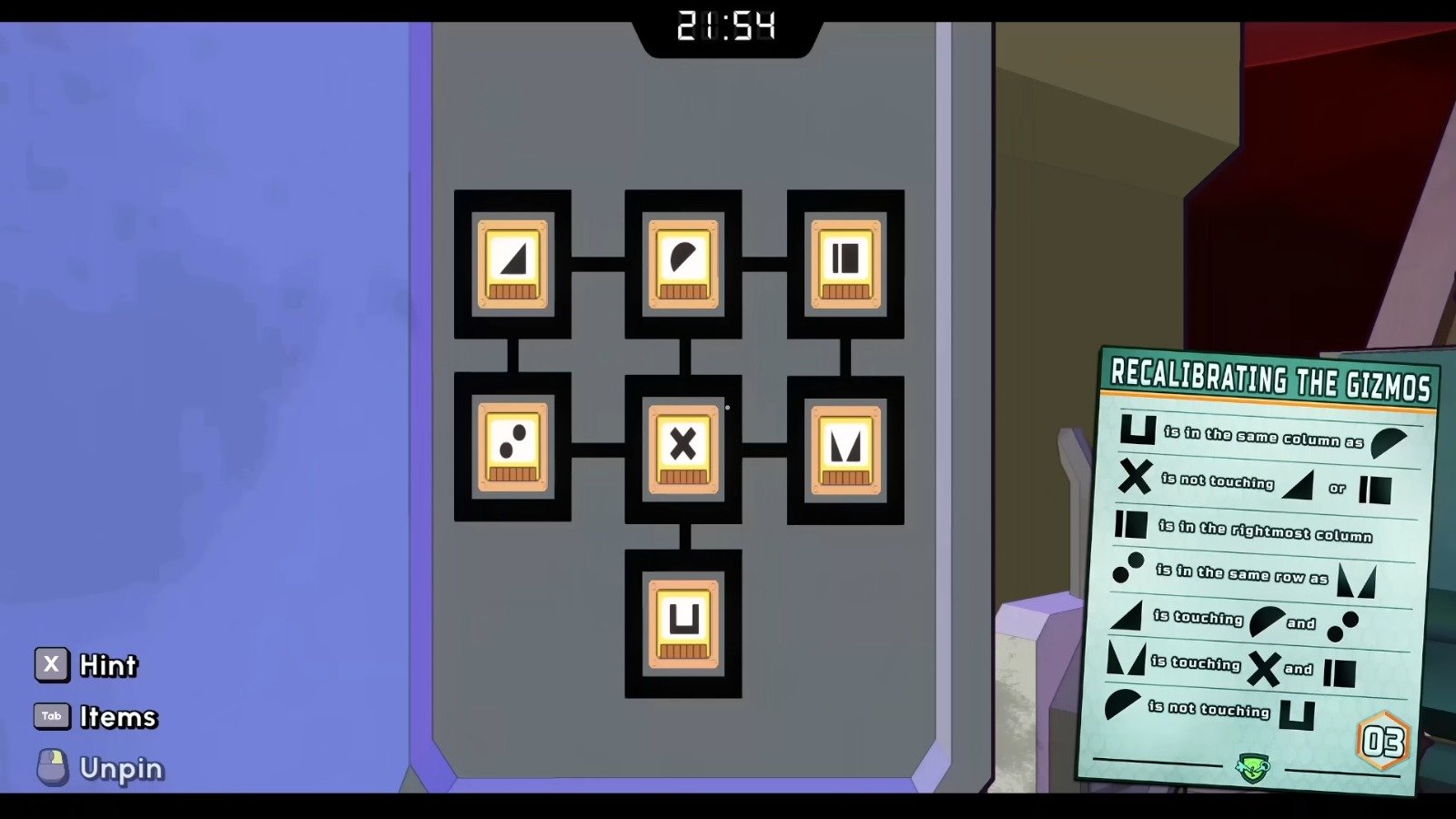
Into The Capture Dimension
The sci-fi puzzle gauntlet continues! The Capture Dimension had similar design challenges as The Experiment, except now we weren’t just in a sci-fi setting on Earth, we were in an entirely different plane of reality. The narrative premise I was given to design this level around was that the Anti-Escape scientists had built a portal to the Capture Dimension, an inescapable realm where they had banished your buddy Jeb. Now you needed to go into the Capture Dimension and save Jeb before you both got stuck there forever.
This raised some fun questions including…
What does the Capture Dimension look like?
What is keeping Jeb trapped in the Capture Dimension?
What does saving Jeb look like?
We had a lot of discussions between design, narrative, and art to figure out how to tackle these questions. We realized that in a level where literally anything could happen, the only way to narrow down our options would be to tether the level to the game’s narrative premise. Therefore - if Liz was a short-tempered mad scientist who strived for perfection, then the Capture Dimension would be filled with Liz’s previous failed experiments she couldn’t bear to look at anymore. The player would have to face off against an assortment of Liz’s evil traps that she had chucked into the Capture Dimension portal like her own personal garbage bin. And of course Jeb would be the victim stuck in each of these traps.
Because the Capture Dimension wasn’t based in our reality, we decided to get a little playful with how time would work in the level. Each trap would be in its own mini-escape room with a much shorter countdown clock. If the player couldn’t save Jeb in time, they’d be sent back to a level hub where they could choose which trap to tackle next. This effectively put Jeb and the player in a Groundhog Day style time-loop, where Jeb would die and re-appear until the player could successfully save him. I wanted the player to have a different relationship with failure in this level compared to the other levels. The intention was for the player to mess up, face real consequences, and have the opportunity to learn from their mistakes…some players liked this better than others. At the end of the day, I believe the best escape rooms prioritize making a player feel clever. So it was certainly a design risk to intentionally make the players feel like they had been set up to fail. More lessons learned!
After lots of iterating I narrowed it down to four traps to get Jeb out of, each trap born out of me trying to get the player to engage with a certain specific kind of spatial reasoning puzzle and theme. This level is packed with slapstick, spectacle, and a high level of challenge.
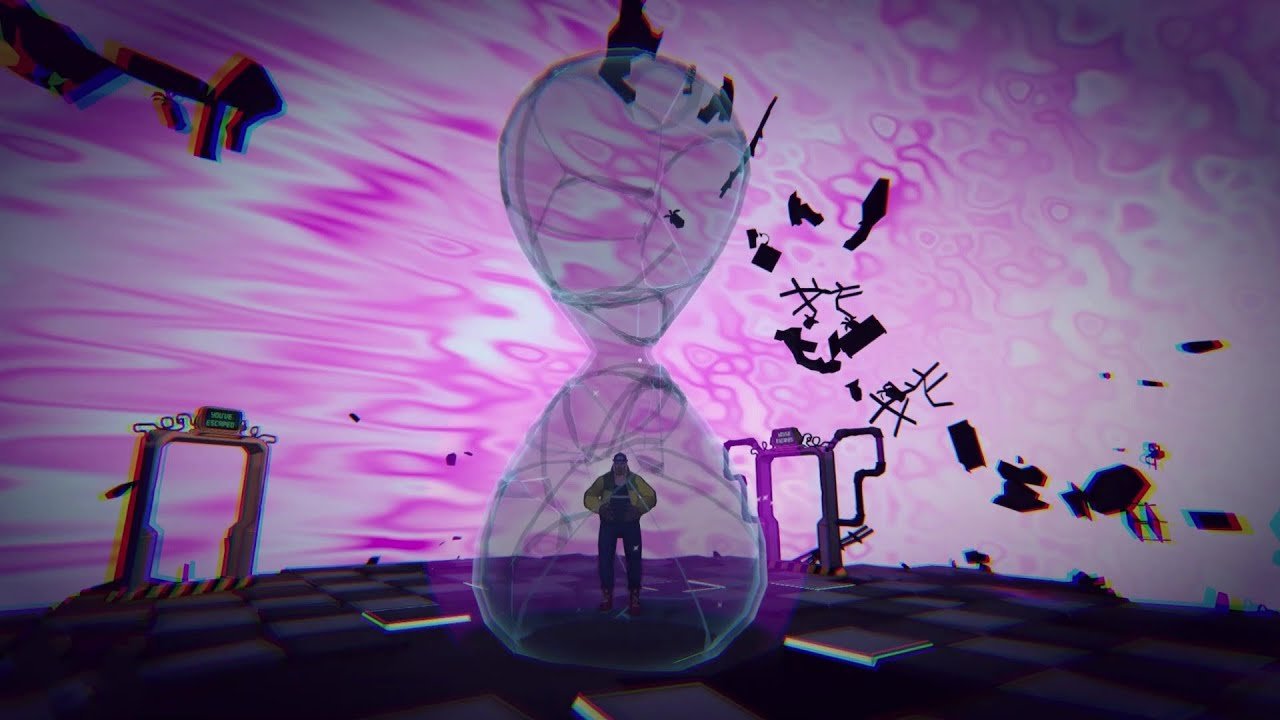

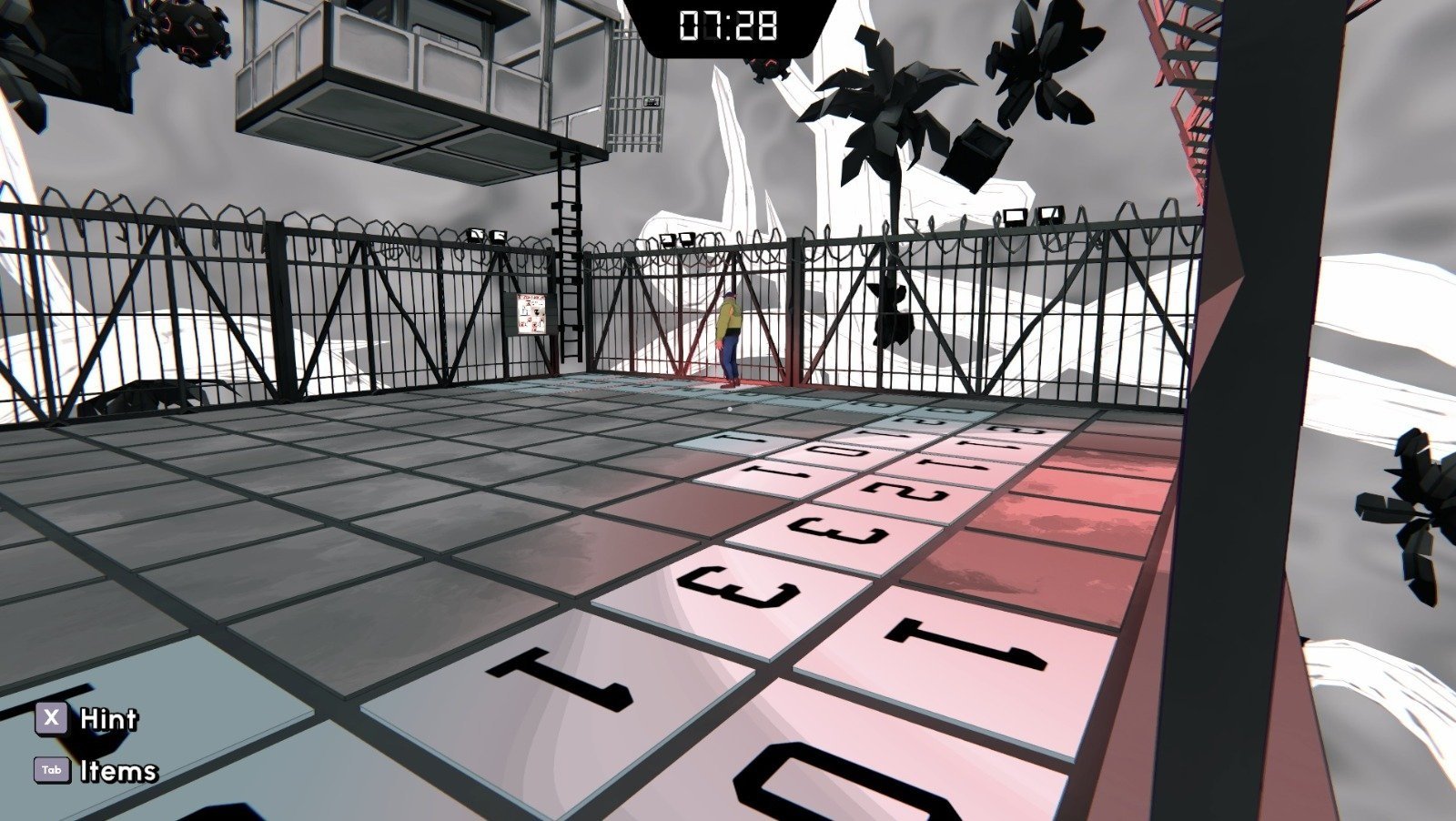
Interlude: Promotional Puzzle Box
As part of the marketing strategy in the buildup to the launch of the base Escape Academy game, it was decided to send various game influencers and Coin Crew team members a real physical puzzle box based on Escape Academy.
After spending so much time designing puzzles for virtual environments, this puzzle box had some unique design challenges. We were going to send out a lot of them, so it had to be relatively low-cost to build, and easy to assemble without making mistakes. It would have to be made of mostly off-the-shelf components with simple customization. And unlike a video game escape room where we had metagame tools to track and hint the player’s progression through the level, we’d be sending this to players with no way to help them if they got too stuck. (And we hoped they’d stream or somehow share their unboxing experience, so getting too stuck would be a disaster.)
After going wild with puzzle designs for the Island DLC, this puzzle box was an exercise in elegant simplicity. I was able to playtest it in real life with friends and family to quickly refine the puzzle designs, hand off the design assets to the rest of the team to make proper art and order all the components, and get it shipped out into the world in only a couple of weeks. Then it was so fun to see streamers receive them and unbox them.
Escape From the Past DLC
The second Escape Academy DLC is a prequel pack of sorts, where you get to play as Sandra Solange and Eel Barnes while they were students at Escape Academy. The bumbling Headmaster Horatio is convinced one of the members of the faculty is out to kill him, and he’s enlisted you to figure out who the aspiring murderer is…before it’s too late! You’ll investigate the three suspects and their classrooms to uncover the truth, while revisiting familiar Escape Academy environments from the base game with a retro 1950’s twist.
The Island DLC may have been a narrative step up from the base game, but this pack took the level design and narrative synergy to a whole nother level. Not only did each individual level have the usual story beats to weave between puzzle elements, but now all the levels had to tell one cohesive whodunnit.
After the design challenges posed by the high-tech science fiction environments called for in the Island DLC, it was a refreshing change of pace to design levels set in the relatively “low tech” 1950’s. It might be silly to use these words to describe puzzles for a video game, but I worked hard to make all the puzzles I designed in the Escape From the Past DLC feel as “tactile” as possible, in contrast to the “digital” style puzzles from the Island DLC. The novel theming of the puzzles can go a long way to keep players engaged and surprised.
It’s Not Rocket Science
In this level players get to explore the art classroom setting from the base game as it looked in the 1950’s. We decided that prior to being the arts campus, that section of the Academy would have been where students took shop class. I looked at a lot of photos of shop classes from the 50’s for inspiration. I wanted to incorporate as many shop disciplines as possible including auto mechanics, woodshop, electronics, and metalworking. I used the visual iconography of these disciplines to come up with tactile feeling puzzles.
A design requirement for each classroom level was coming up with a threat that could feasibly endanger Headmaster Horatio, while still being related to the level’s theme. For the shop class, I knew I wanted the level to be focused around something that was being built using shop class tools while being iconically tied to the 1950’s. Then the thought occurred, didn’t the space race start in the 50’s? Why not make it a rocket? Making it a rocket wound up being an elegant solution that solved a bunch of design requirements. We needed a ticking clock to provide pressure for the player to solve the puzzles…in this case the ticking clock of a rocket countdown. We needed a threat of danger for the player to want to solve the puzzles…in this case a broken rocket that will blow up unless it’s fixed. And we needed a threat to emerge that would endanger Horatio…in this case once the rocket is primed to launch, the launchpad would tip and point the rocket towards Horatio’s office, turning it into a missile unless the rocket was righted in time.
No More Mister Heist Guy
In this level I got to revisit another environment I designed for the base game and turn the computer lab into a subterranean accounting classroom. The narrative premise I was tasked to design the level around: you’d be performing some “creative accounting” and performing a heist on Headmaster Horatio’s private vault, but unbeknownst to you the vault had been booby-trapped to kill Horatio, and now you’d be caught in the trap’s clutches instead.
I wanted this level to follow the general narrative beats of an action movie-style heist. The team is assembled, the plan is formulated, the heist is executed, something goes wrong, and then you need to improvise a brilliant last-minute escape. It was a fun design challenge to come up with a string of unique puzzles that acted as the security measures you needed to outwit while performing the heist.
To balance out the more fantastical heist elements of the level, I grounded the first half of the level in accountant iconography. Green visors, rows of filing cabinets, financial spreadsheets, and abacuses were repurposed as puzzles. I also tried to incorporate as many 1950’s 1950s-style games as I could to give the level some additional flair. I was able to design puzzles based on snakes and ladders, crosswords, and a pinball machine. I’m especially pleased with the incorporation of snakes and ladders as one of the first puzzles in the level because that puzzle foreshadows the primary action of the level — the act of descending and ascending the subterranean vault.
Yes Chef
For this level I got to revisit the Dining Hall from the base game, a level originally designed by Rachel Clayton (read more about her work here). When we started working on a 1950’s themed pack we knew we wanted to put a diner in there somewhere, but it was a challenge to revisit a level theme (food) that a previous designer had done such a good job making puzzles for. It was important to me that this level felt like it covered new ground. To differentiate from the Dining Hall base game level, I tried to design as many puzzles as possible around the act of cooking food.
In collaboration with the narrative team, we decided to structure this level around making a three-course meal for the other professors at the school. The mid level twist to endanger Horatio would occur when the players unintentionally add a poisonous ingredient to their recipe, forcing them to scramble to unlock the antidote and save their faculty. This level also needed to tutorialize the players on the concept of the “Kitchetron-3000”, a multipurpose cooking accessory that the Chef character in the game used for everything in the kitchen. So I needed to figure out ways to incorporate the Kitchetron into lots of the puzzles so the players understood how it worked and some of the tasks it was capable of performing.
I found designing puzzles based on cooking food to be a pretty tricky theme. My solution was to use different techniques to encrypt the recipes in the cookbook, and then make cooking the food a fairly simple task of using the Kitchetron to perform simple steps in a specific sequence or quantity. Then I tried to incorporate as much 1950’s diner iconography as I could into the other puzzles in the level. Jukeboxes, cat clocks, savory jello, and pie carousels all make an appearance.
My favorite element of this level has to be the model train running around the diner. As a model train enthusiast, I had been trying to incorporate a model train or train-themed puzzle into an Escape Academy forever. While maybe not authentically 1950s…I remember growing up going to this chain called Ruby’s Diner that was 1950s themed, and the location near me had a model train running on a track hanging from the ceiling. So for me, the connection was obvious. I also found some old photos and videos of model train restaurants where food was served from the kitchen via model trains…proving the idea had some precedent. But it all came together once we realized we’d need a mechanic to serve food to the faculty while keeping the players confined to the kitchen, and the model train went from serving a purely aesthetic purpose to solving a central design requirement of the level.
Tournament of Puzzles DLC (Coming Soon)
I was the primary puzzle and level designer for the Tournament of Puzzles DLC, coming out real soon! I’ll post more behind-the-scenes documentation of my work on that once it goes public.
I had an amazing three years with Coin Crew Games, and I’m so proud of all the fun puzzles and levels I got to design with them. If you haven’t yet given Escape Academy a play I do hope you check it out. It was a labor of love made by an incredibly talented team. I’m so grateful they trusted me to come up with so many designs and supported me when I had all these crazy ideas.







































































